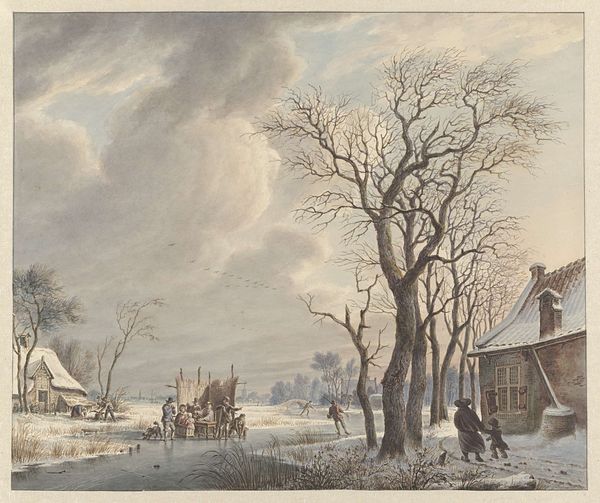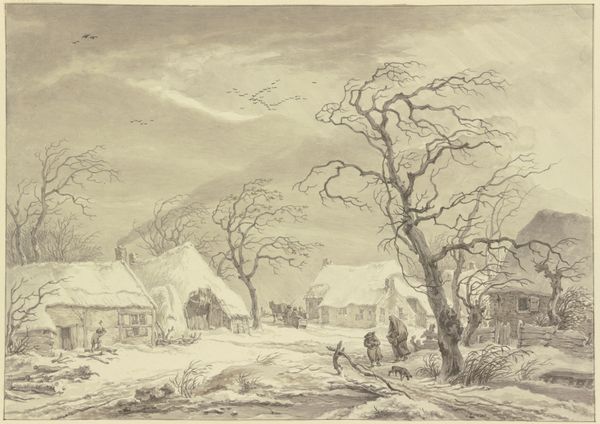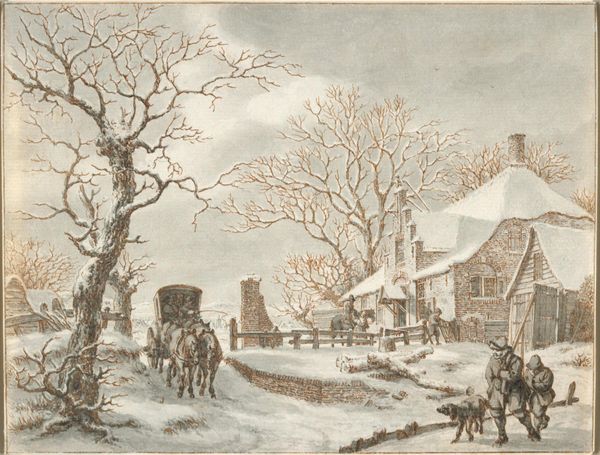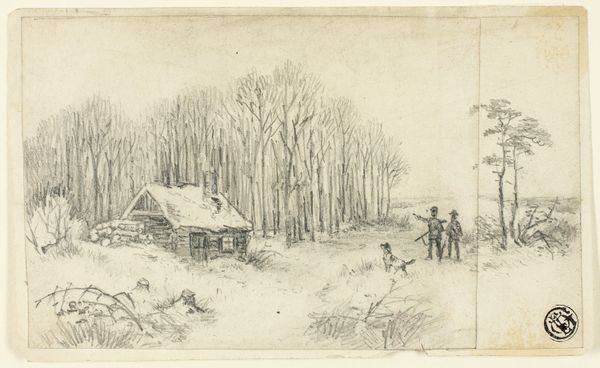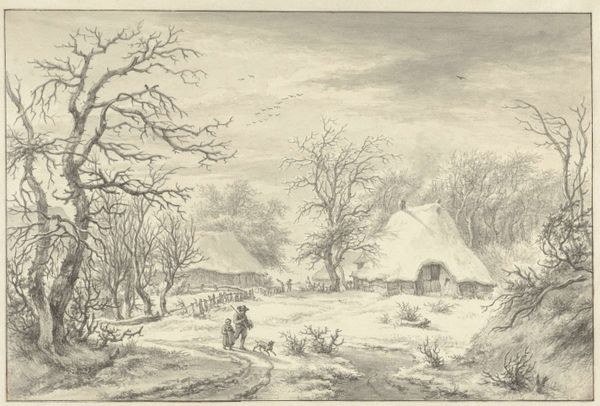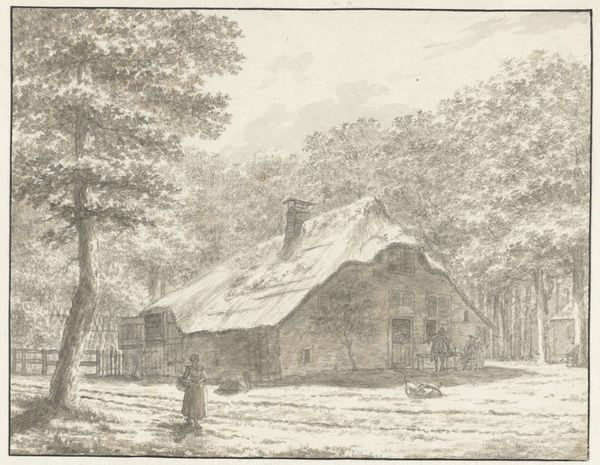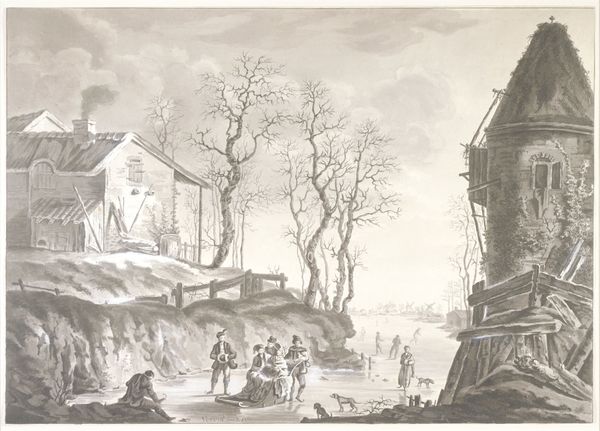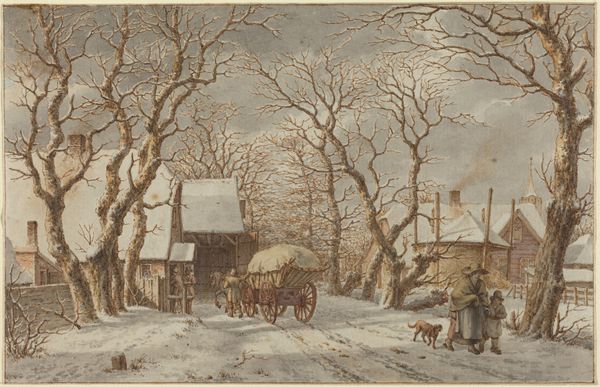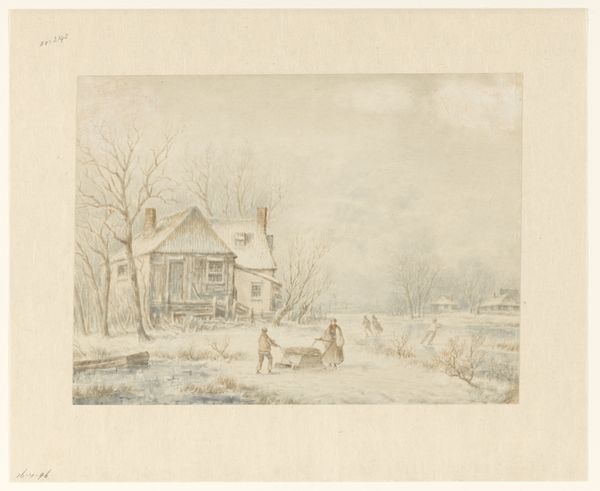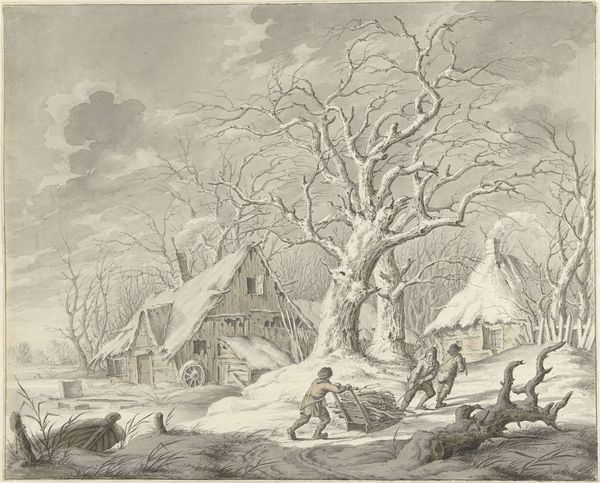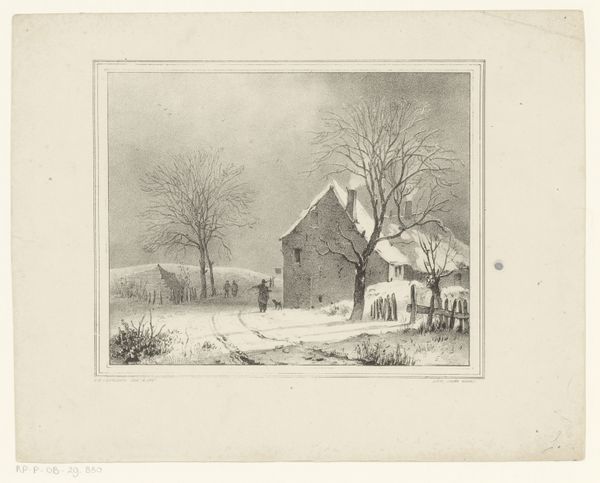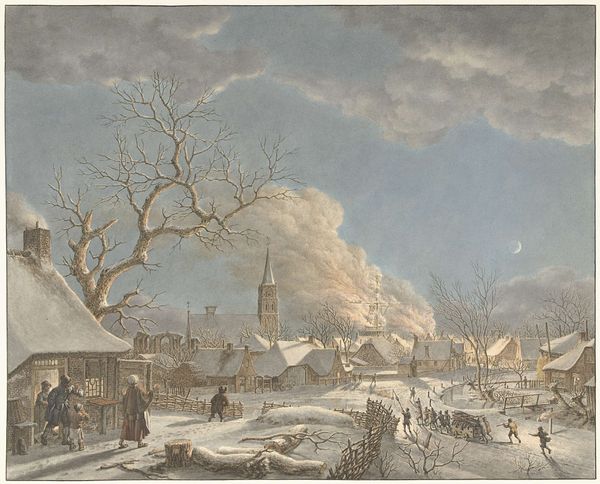
drawing, watercolor
#
drawing
#
neoclacissism
#
landscape
#
watercolor
#
watercolour illustration
#
genre-painting
#
watercolor
Dimensions: overall (approximate): 11.5 x 17.8 cm (4 1/2 x 7 in.)
Copyright: National Gallery of Art: CC0 1.0
Editor: This is Jacob Cats' "Farmyard in Winter," made around 1786 using watercolor and drawing techniques. There’s something very serene about it, despite the barren trees and cold landscape. What captures your attention in this scene? Curator: The winter scene, rendered with such delicate strokes, is not just a landscape; it's a repository of cultural memory. The thatched roofs, the bare trees, even the activity of the figures all speak to a specific understanding of nature and rural life in the late 18th century. Consider the pig foraging in the snow. How might that simple image resonate with contemporary viewers familiar with agrarian life? Editor: I hadn't considered it that way. It just seemed like part of the scenery. Curator: It's more than just scenery. Pigs have long been symbols of sustenance, but also of impurity. In this context, its presence can symbolize hardship, where even survival is a matter of foraging. What feelings does that evoke, thinking about how animals function as signs of the times? Editor: A bit somber, I suppose. It’s interesting to think about everyday elements carrying such symbolic weight. The composition is also quite striking – how the boat-like structure divides the view, do you think it is intended for symbolic meaning? Curator: Absolutely. Watercraft and shipbuilding serve as metaphors for journeys, life's voyage, and the reliance on trade. Perhaps also a symbol of hope, of surviving through the harsh winter and building towards a more promising season? Cats captures how these images embed continuity in rural existence. It suggests the cultural endurance, even during times of Neoclassical upheaval. What has stood out most for you so far? Editor: Definitely seeing the layers of meaning within seemingly simple images, and how the mundane connects to larger cultural ideas. Curator: Precisely. It's about seeing the everyday as extraordinary. The weight it carries enriches our understanding of the era.
Comments
No comments
Be the first to comment and join the conversation on the ultimate creative platform.
